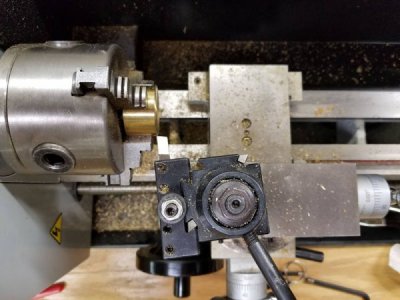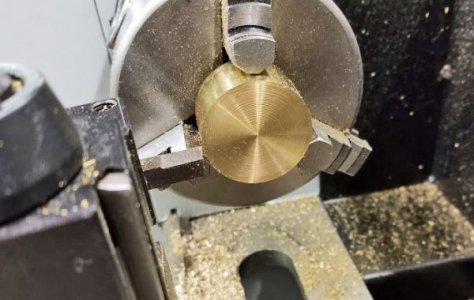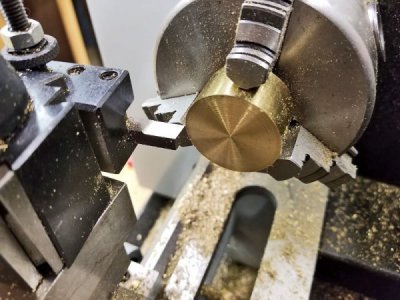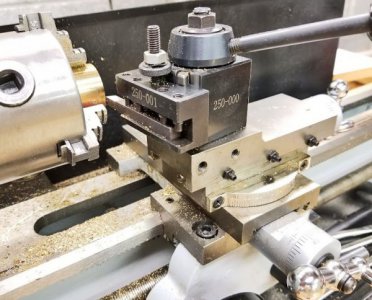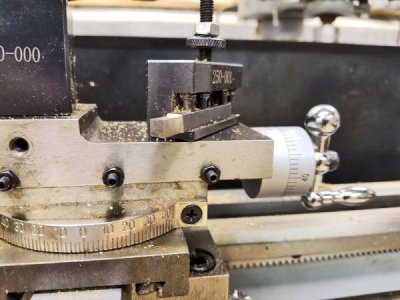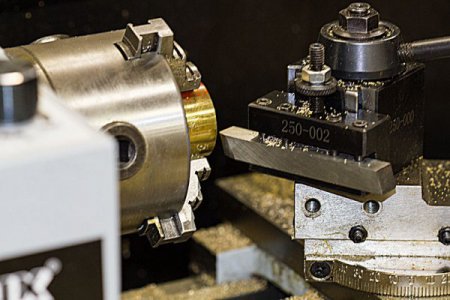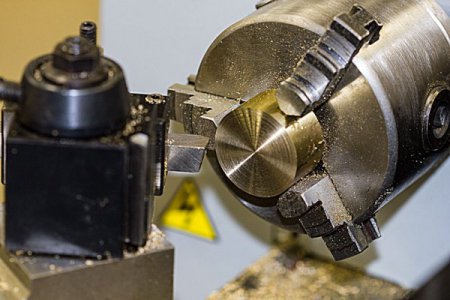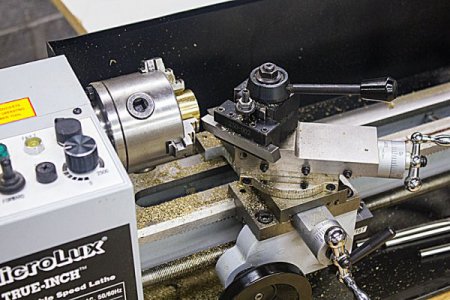- Joined
- Dec 20, 2012
- Messages
- 9,422
Brass is one of the easiest metals to turn. When things are right, it cuts like butter. When things are wrong, you dig in.
The things that must be right include having the tool dead on center height. If the tool is too high, you rub. If too low, you will dig in, no matter what your tool geometry is. I suspect this is you key problem - the tool is low.
Ideally, you want a tool with zero to maybe 5 degrees of side rake only - no back rake. You also want fairly large relief angles, on the order of 12-18 degrees. Brass likes really sharp tools so grind the relief angles and then hone the sides and the flat top and the tool will cut well. Also hone a nose radius; for brass, this is not that critical but I prefer a smaller nose radius, maybe 1/32". Find a 1/32" drill bit and make the nose radius like the bit. With all this said, a standard tool with side and back rake will work but your set up must be rigid and it must be on center height.
I don't think cutting speeds are all that critical for brass. I tend to run fast, maybe around 1000-1200 rpm on a piece like yours and I run much higher for smaller work. The material is so soft that just about anything will work fine.
As for drilling, I think dubbing your drills is a good idea if you insist on using a pilot drill. If you go straight to your main drill without a pilot then it will drill just fine as is.
If any of this is unclear, let us know. For now, look up using a 6" rule to find center height.
The things that must be right include having the tool dead on center height. If the tool is too high, you rub. If too low, you will dig in, no matter what your tool geometry is. I suspect this is you key problem - the tool is low.
Ideally, you want a tool with zero to maybe 5 degrees of side rake only - no back rake. You also want fairly large relief angles, on the order of 12-18 degrees. Brass likes really sharp tools so grind the relief angles and then hone the sides and the flat top and the tool will cut well. Also hone a nose radius; for brass, this is not that critical but I prefer a smaller nose radius, maybe 1/32". Find a 1/32" drill bit and make the nose radius like the bit. With all this said, a standard tool with side and back rake will work but your set up must be rigid and it must be on center height.
I don't think cutting speeds are all that critical for brass. I tend to run fast, maybe around 1000-1200 rpm on a piece like yours and I run much higher for smaller work. The material is so soft that just about anything will work fine.
As for drilling, I think dubbing your drills is a good idea if you insist on using a pilot drill. If you go straight to your main drill without a pilot then it will drill just fine as is.
If any of this is unclear, let us know. For now, look up using a 6" rule to find center height.

